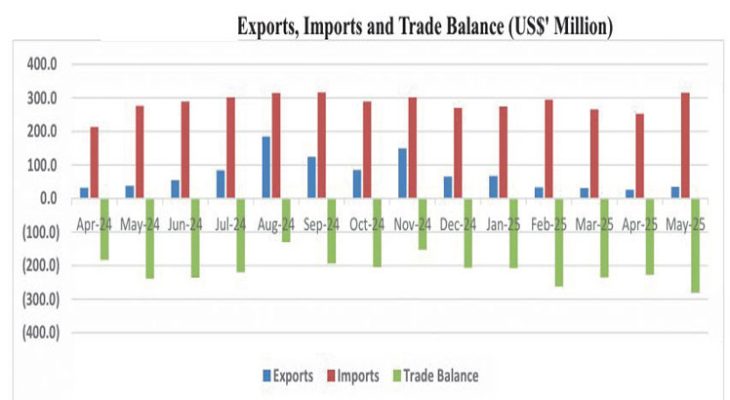
Malawi’s Trade Deficit Surges 28%: A K2 Trillion Challenge for Business Growth and Investment
Key Business Points
- Malawi’s trade balance deficit has worsened by 28 percent to $1.2 billion (about K2 trillion) in the five months to May, due to a significant increase in imports and a marginal growth in exports.
- Diversification of the export base is crucial to improve the trade balance, with economists suggesting investment in high-value sectors such as macadamia, avocado, agro-processing, tourism, and information and communications technology.
- Trade facilitation is a key area of focus for the Ministry of Trade and Industry, which has successfully reduced the time and costs of doing business for cross-border traders, but acknowledges that trade balance issues are affected by many factors outside its role.
Malawi’s cumulative trade balance has taken a hit, worsening by 28 percent in the five months to May to hit $1.2 billion (about K2 trillion). This is attributed to a 23 percent growth in imports, which increased from $1.1 billion (about K1.9 trillion) to $1.4 billion (about K2.4 trillion), while exports grew by a paltry 2.7 percent to $209 million (about K367 billion) from $204 million (about K358 billion). The National Export Strategy (NES II), which aims to boost the share of exports in the gross domestic product to 20 percent by 2026, is still a long way from achieving its goals.
The data indicates that the monthly trade balance was minus $280 million compared to minus $238 million in May 2024, with exports dropping while imports surged. The rise in imports was largely due to increased purchases of fuel, pharmaceuticals, iron and steel, and cereals. Mkulu akulu, or big buyers, in the country are driving up demand for these imported goods, putting pressure on the trade balance. Common Market for Eastern and Southern Africa Business Council president James Chimwaza attributed Malawi’s worsening trade gap to various factors, including the volatile exchange rate and continued lack of production capacity.
Economists are intensifying calls to diversify the country’s export base and invest in high-value sectors. Mwapata Institute research fellow Christone Nyondo suggested that Malawi should focus on less volatile, higher-value crops like macadamia and avocado, while also investing in agro-processing and non-agricultural sectors such as tourism and information and communications technology. This would help to reduce the country’s reliance on traditional exports and improve its uzengo, or competitiveness, in the global market.
The Ministry of Trade and Industry is implementing the NES II to increase exports of local goods and services to the regional and global marketplace. Principal Secretary Christina Zakeyo applauded the ministry for successfully reducing the time and costs of doing business for cross-border traders, saying that trade facilitation is a game-changer and a strong contributor to the reduction of trade costs and improved efficiency. However, she acknowledged that trade balance issues are affected by many factors outside the ministry’s trade facilitation role. With Malawi exports valued at roughly $1 billion (about K1.7 trillion) against imports at $3 billion (K5.2 trillion), creating a $2 billion (about K3.5 trillion) negative trade balance, it is clear that more needs to be done to address the trade gap and promote kulima kwa mpango, or planned farming, and other high-value sectors.
What are your thoughts on this business development? Share your insights and remember to follow us on Facebook and Twitter for the latest Malawi business news and opportunities. Visit us daily for comprehensive coverage of Malawi’s business landscape.
